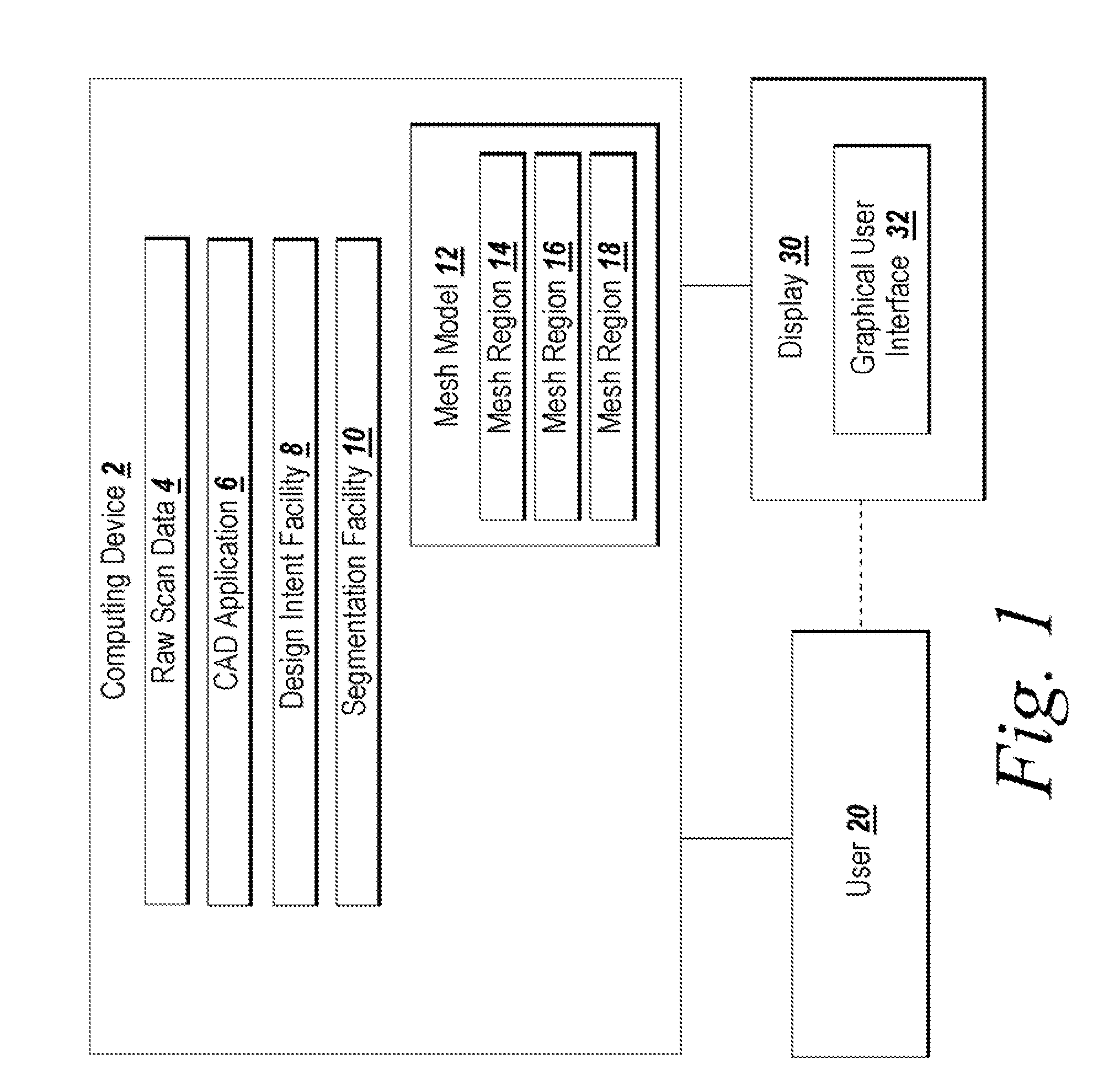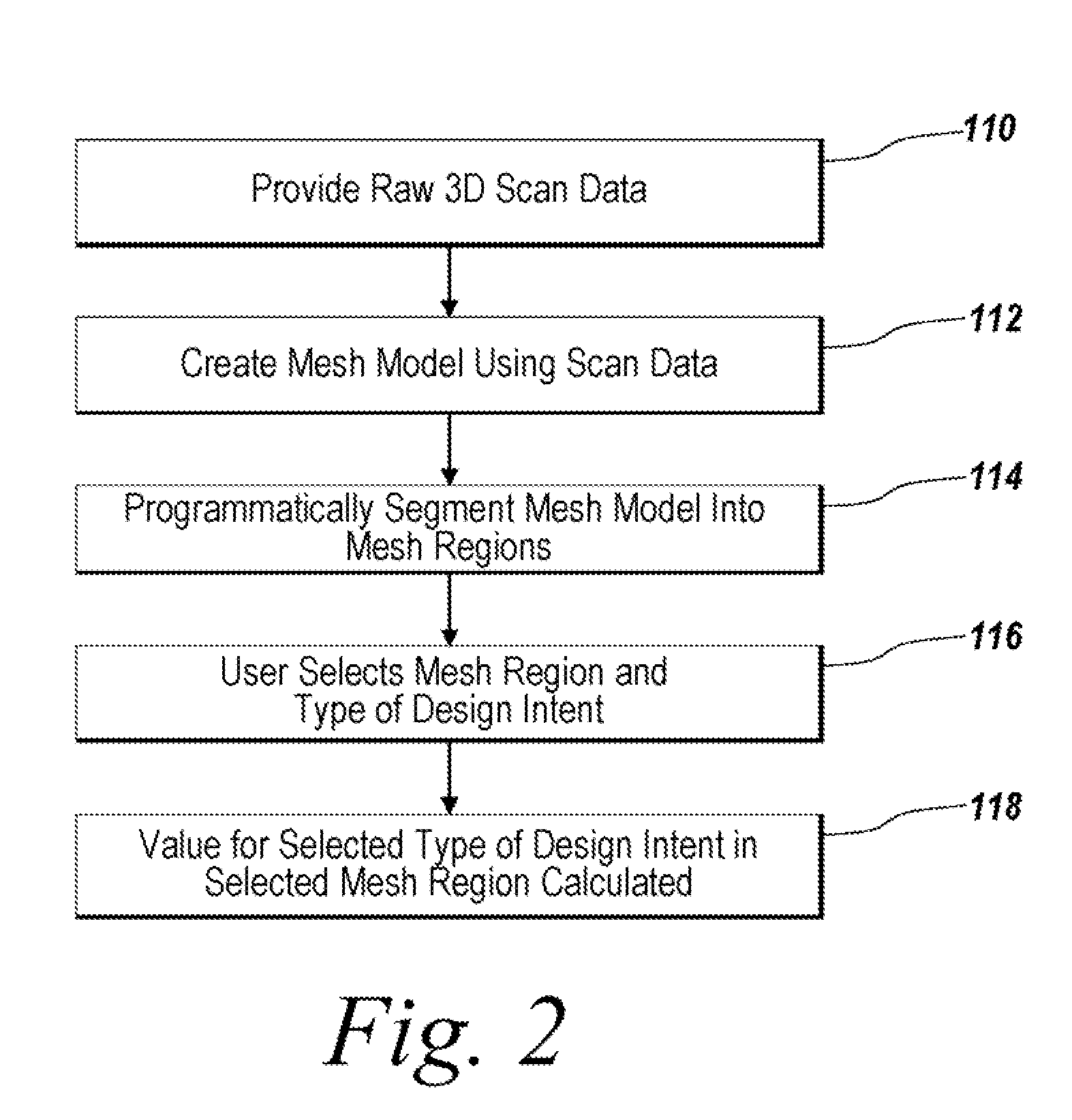System and Method for Identifying Original Design Intents Using 3D Scan Data
- Summary
- Abstract
- Description
- Claims
- Application Information
AI Technical Summary
Benefits of technology
Problems solved by technology
Method used
Image
Examples
Embodiment Construction
[0042]The illustrative embodiment of the present invention provides a user with tools to approximate original model design intents while reverse engineering a three-dimensional object from 3D scan data. An automated process allows a user to target particular mesh regions and specify the particular type of original design feature for which the user is interested in obtaining a parameter value. The present invention programmatically analyzes the underlying mesh data in order to infer the original design intent and present the user with a best estimation as to a value for the original design intent. The user is then able to use the approximation or modify it as required while creating solid model parts.
[0043]FIG. 1 depicts an environment suitable for practicing the illustrative embodiment of the present invention. A computing device 2 includes a collection of raw 3D scan data 4 for a scanned three-dimensional object. The raw 3D scan data 4 is collected from a three-dimensional scanner....
PUM
 Login to View More
Login to View More Abstract
Description
Claims
Application Information
 Login to View More
Login to View More - R&D
- Intellectual Property
- Life Sciences
- Materials
- Tech Scout
- Unparalleled Data Quality
- Higher Quality Content
- 60% Fewer Hallucinations
Browse by: Latest US Patents, China's latest patents, Technical Efficacy Thesaurus, Application Domain, Technology Topic, Popular Technical Reports.
© 2025 PatSnap. All rights reserved.Legal|Privacy policy|Modern Slavery Act Transparency Statement|Sitemap|About US| Contact US: help@patsnap.com



